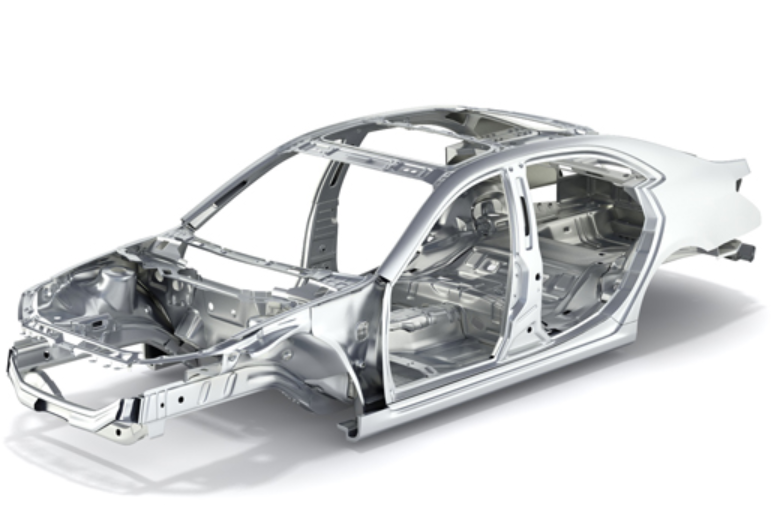A Complete Introduction to Sheet Metal Forming and Its Benefits
Contents
What is sheet metal forming?
Sheet metal forming is the process of turning a flat sheet of steel (or other material, such as aluminium or copper or titanium) into a complex 3D shape, such as those seen in vehicles or aircraft. Compare this to sheet metal fabrication, in which sheets of steel are bent or folded, into simple shapes, such as a folded box or enclosure.
Sheet metal forming is nearly always done with hard “tooling”, which can be placed in a high-speed production press, and stamp parts out very efficiently, usually at rates such as 30 parts per minute or higher. Because of the very high efficiency of sheet metal forming for large volumes of parts, no other process has ever come close to replacing sheet metal forming, to produce the equivalent part. Sheet metal fabrication is a slow process in comparison, and 3D printing (even 3D metal printing) is incredibly slow in comparison.

A typical car body has about 440 sheet metal parts made by forming
Think of stamping pennies or quarters at the US mint…..how fast and how many pennies or quarters are stamped per hour? Now think of building a sheet metal box in your workshop at home? How many boxes can you build in a day? Sheet metal forming is the US mint of manufacturing for sheet metal products!
Typical sheet metal forming products that take advantage of this fact are everyday consumers items, such as motor vehicles (steel car body), white goods such as washing machines and dryers, lawn mowers, televisions (chassis), your phone (multiple small parts inside), PCs, power tools, etc, etc, etc.
Using Simulation to Refine Product Design
Now think about all of these products. How many of these sheet metal products (or parts) have splits or wrinkles? How many parts are badly deformed out of shape? NONE! (at least in the case of good quality products!) How do manufacturers achieve high-quality sheet metal products, manufactured in high volume, for a low cost without defects such as wrinkles or splits?
In the age of advanced technology, sheet metal products are at first “manufactured” in the virtual world, using simulation to find and prevent wrinkles, splits, and springback problems ever making it into manufacture.
Learn More
Interested in learning more about what is possible with advanced forming simulation software? Take a look at a few of our case studies and see what’s we’ve accomplished for our clients.
